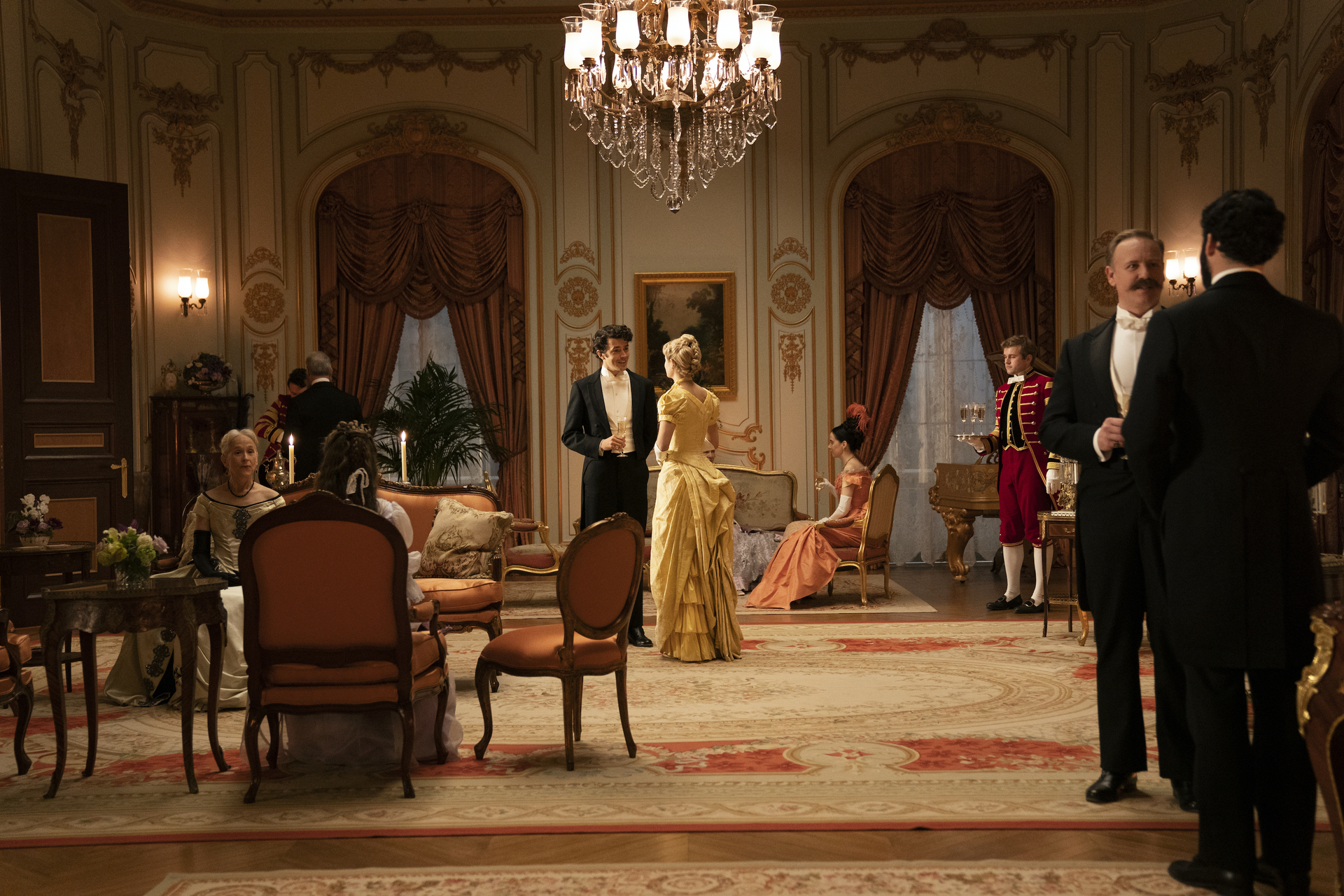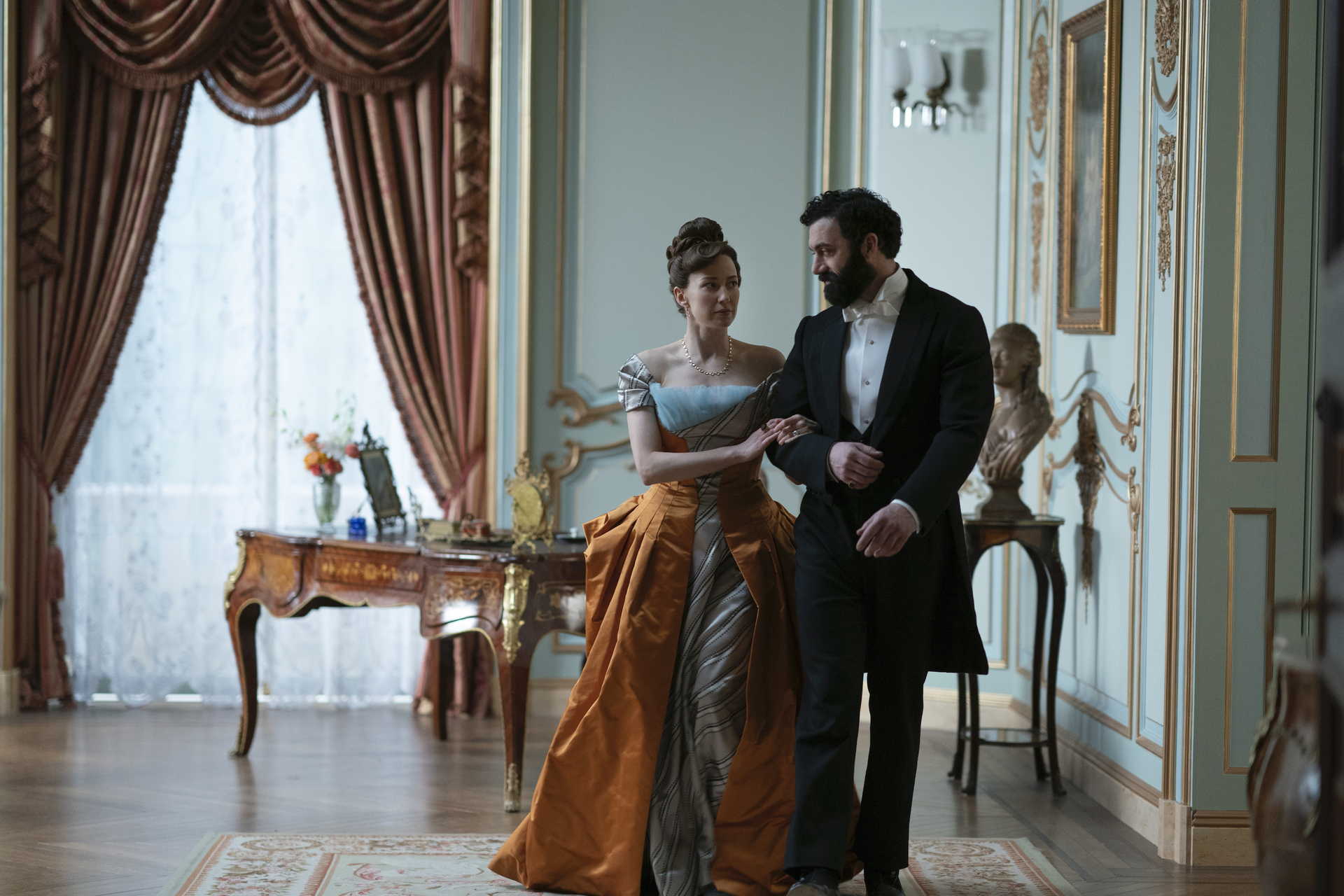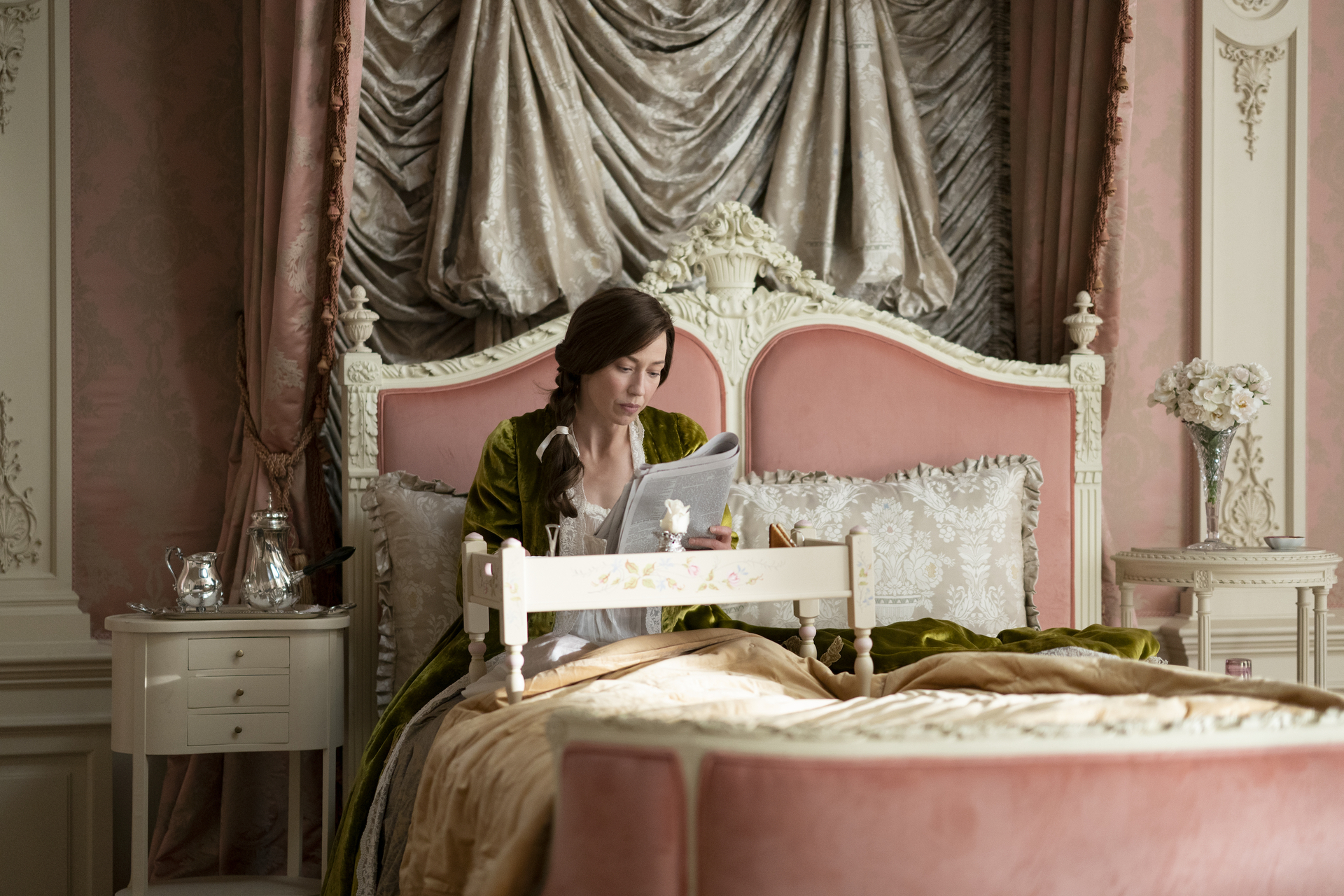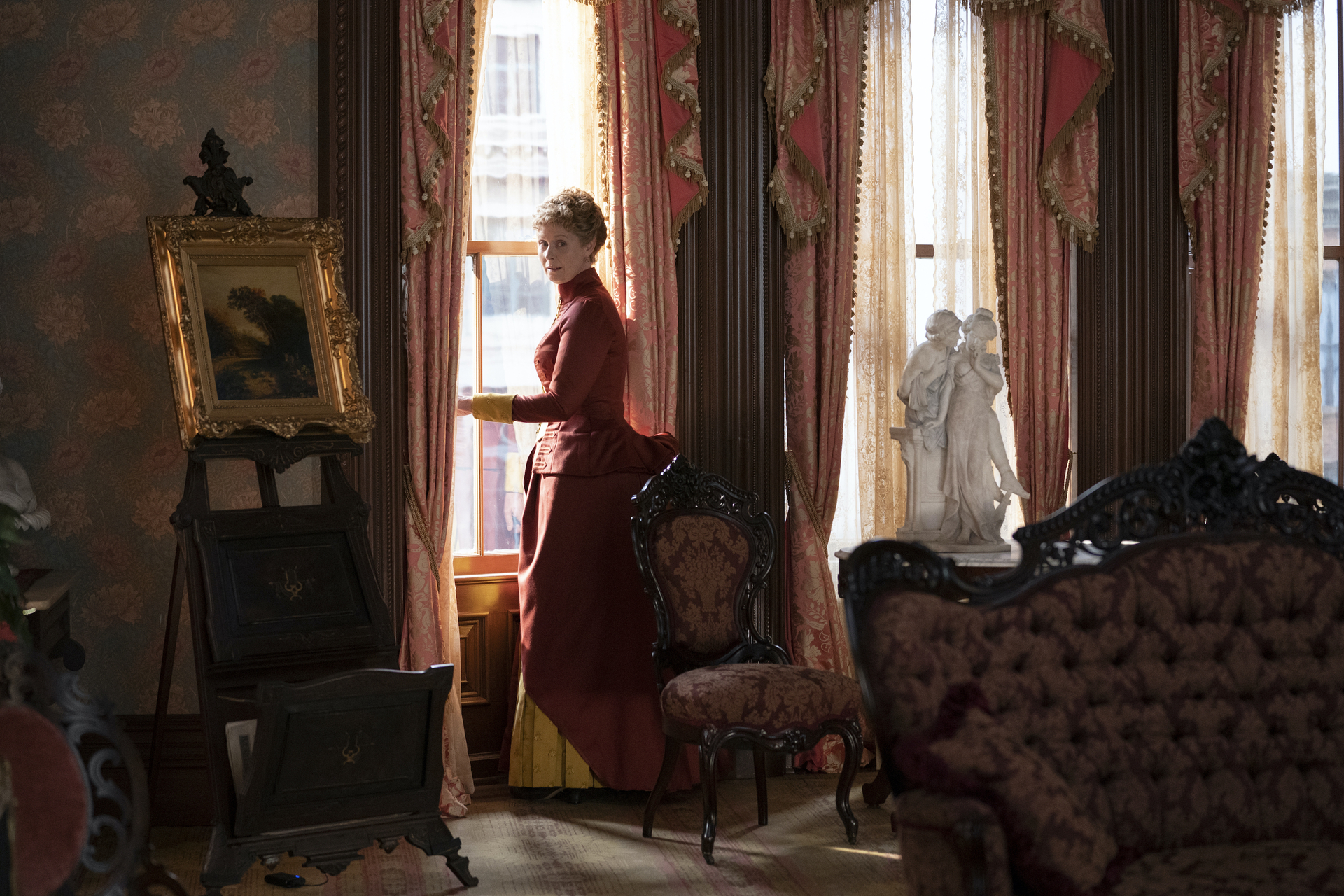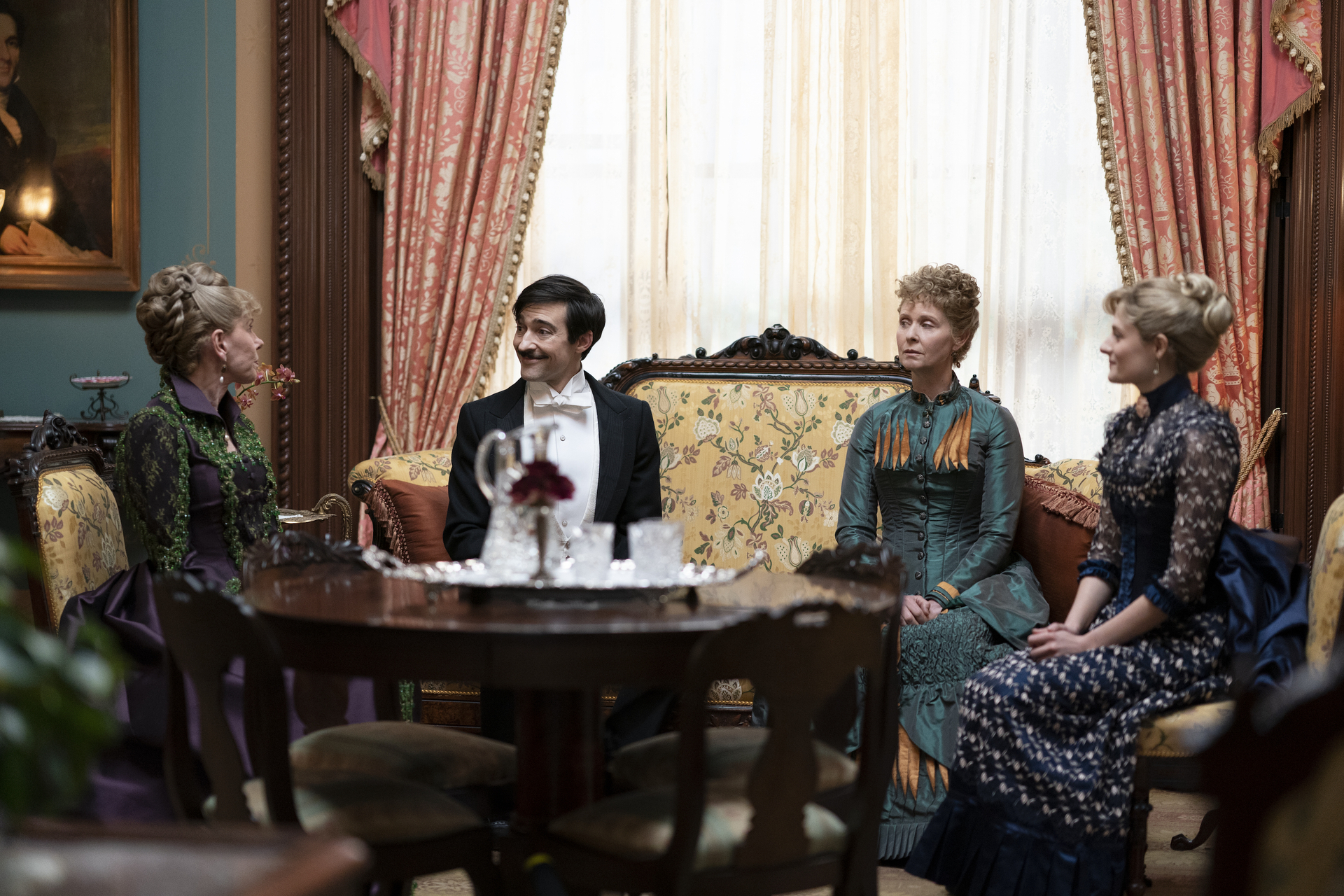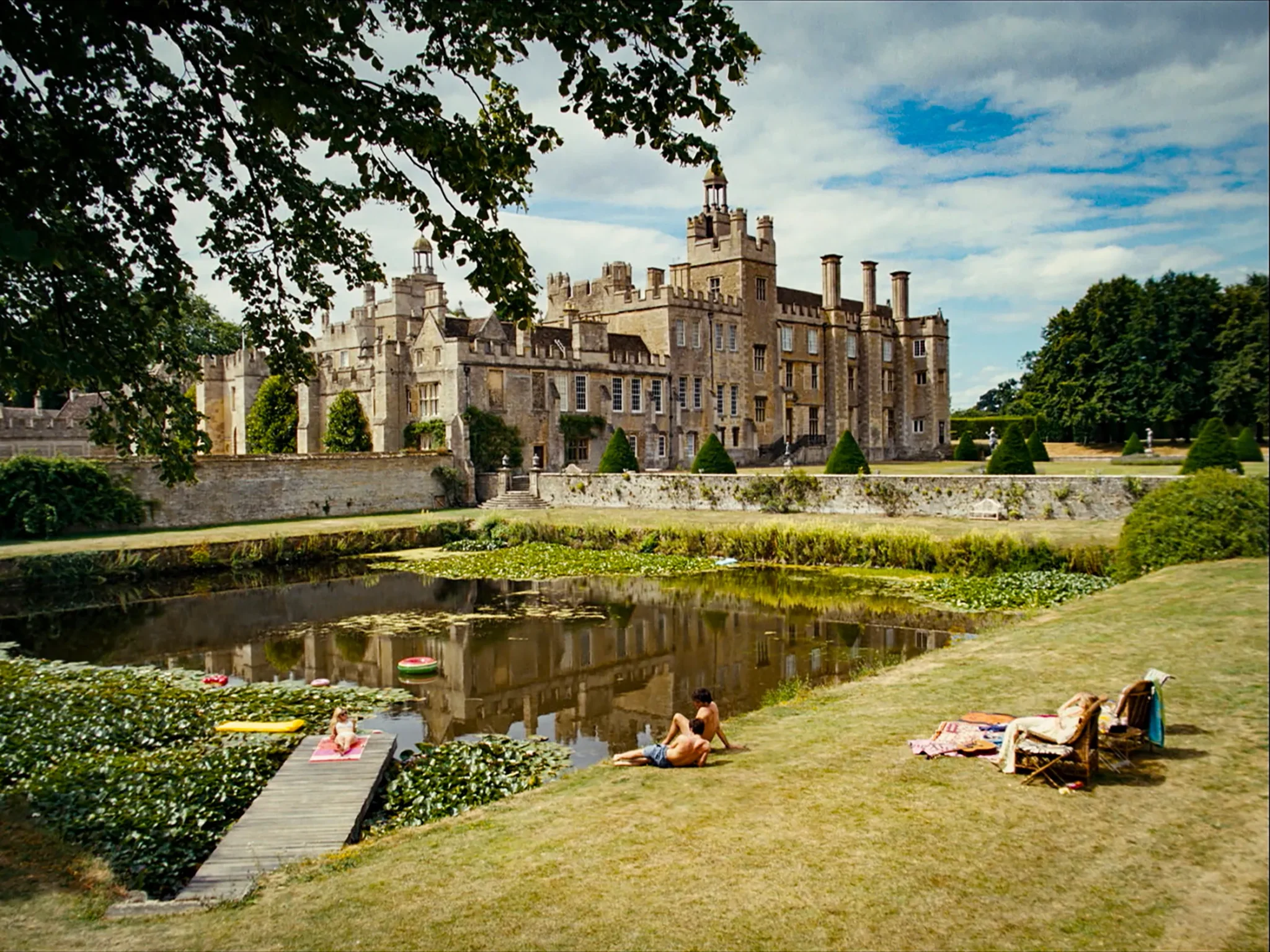For some, it was a time of great wealth, where opulent mansions housed cavernous ballrooms and sweeping staircases, worthy of a grand entrance with the requisite ballgown and voluminous train. Social climbing was a calculated blood sport whose matches were fought through inkwell and pen. Manners and etiquette were of the utmost importance. It was the period of the Gilded Age, where all that glittered was not necessarily gold.
Tasked with the series’ design were production designer Bob Shaw and set decorator Regina Graves, who were given access to a list of historic houses that read like a who’s who of late 19th-century society. Newport’s Marble House, The Colony and The Breakers, Lyndhurst Mansion on the Hudson River, Glenview Mansion in Yonkers and The Castle in Troy, New York, are just a few of the choice set locations (bolstered by four different soundstages).
No stranger to period films, Shaw previously worked on The Irishman and Boardwalk Empire, where research played a huge role. The Emmy-winning designer explored the work of architect Richard Morris Hunt (known for his work on the Newport “summer cottages” of the wealthy) and the designs of his historic houses as well as Stanford White (who is the Russell’s architect in the series). “White was just getting started at that time and did the Lotte Hotel [formerly the Helmsley Palace], the Villard House, and the Park Avenue Armory in 1882, which influenced my choices,” he says. Shaw was also inspired by the Carnegie Mansion, now the Cooper Hewitt, Lotos Club, and Sloane House on East 72nd Street.
Two of the most prominent sets were the Russell and van Rhijn mansions on East 6lst Street, shot on a backlot in Old Bethpage, Long Island. The “city block,” complete with roads, sidewalks, horses, and carriages, was constructed outside the Museum of American Armor (with the help of CGI), close to the soundstages at Gold Coast Studios where the Russell House’s magnificent 30-foot-tall entrance hall was built.
Color and style distinguish the Russell House, with its light-blue palette (inspired by a fabric swatch that Graves had been eyeing for a piece of furniture) and French antiques denoting new money. Period details include his-and-hers bedrooms, a gentlemen’s library complete with blue stained-glass windows (and a fictitious desk from King Ludwig of Bavaria), a lavish ballroom (filmed at The Breakers’ Music Room), and plenty of ceiling murals, Greek columns, and ornate gilt detailing. “We would think about the characters, looked at what they would be wearing, and it sort of evolved from there,” Graves explains.
Bertha’s bedroom, influenced by Alva Vanderbilt (who, Shaw notes, is Bertha’s “spirit animal”), is a sea of salmon pink and crème French furnishings and a Giovanni Boldini¬–inspired portrait of the mistress of the house complete the décor. George’s bedroom was shot at Marble House’s Consuelo Vanderbilt room, with red as the predominant color. The kitchen was another area of importance where much of the activity took place. Shooting at The Elms in Newport, the designers had to clean up 100-year-old plus tile, build tables, add custom lighting, locate salvage yard sinks, and redo the copper pots and stoves to appear period-perfect.
In stark contrast to the Russell House, the van Rhijn House is “heavy, dark, and purposely done that way,” says Graves. “We figured that even though it was the 1890s, they probably would have bought [Victorian] furniture in the 1860s.” Using shades of gold, burgundy, red and mustard, “we went for a much deeper palette, as they have been there a long time and burrowed in,” says Shaw, referencing the van Rhijns’ pre-American Revolution roots. Gramercy Park brownstones of the era provided ample inspiration. “People sort of lived in the dark at that time, with awnings and heavy draperies and woodwork,” adds Shaw. While the result is heavy-handed, “we didn’t go as extreme as it might have been in reality, with that riot of pattern on pattern—a lot of stencils and busy carpet and wallpaper.”
At the end of the day, Fellowes’s stamp of approval says it all. “He was very happy with the sets,” says Graves. “He wanted people to be drawn into the whole look of it all.” Mission accomplished.
















